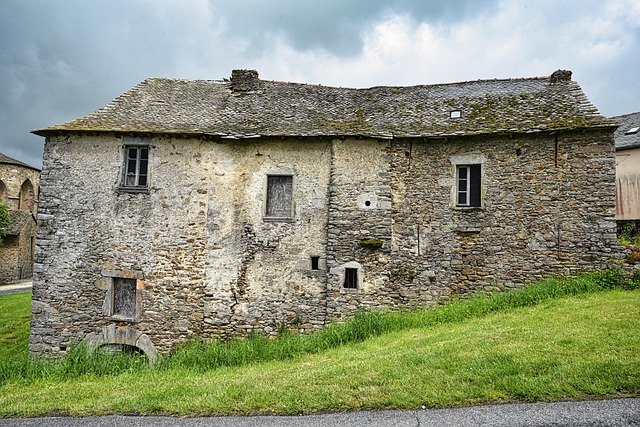Commercial roof installation demands strategic planning, considering structure integrity, climate, and budget. Choosing suitable roof types (flat, metal, membrane) and durable materials is key. Experienced contractors offer expert guidance on ventilation, drainage, and underlayment. Reputable firms ensure compliance with regulations, prioritize worker safety, and provide tailored solutions for diverse commercial needs, ultimately offering a sound investment protecting business assets.
When businesses plan construction or expansion projects, a key consideration is efficient and durable commercial roof installation. This guide explores essential aspects of the process, from understanding unique installation needs to selecting suitable roofing materials. We break down the steps involved, highlighting common mistakes to avoid during expansions while emphasizing longevity and maintenance tips. By navigating these factors, businesses can ensure their commercial roofs provide reliable protection for years to come.
- Understanding Commercial Roof Installation Needs
- Factors to Consider Before Hiring Contractors
- Types of Commercial Roofing Materials
- The Step-by-Step Process of Installation
- Common Mistakes to Avoid During Expansion
- Ensuring Longevity and Maintenance Tips
Understanding Commercial Roof Installation Needs

When businesses plan for construction or expansion, a crucial aspect often overlooked is understanding their commercial roof installation needs. This process involves several key considerations. Firstly, assessing the structural integrity of the existing building and determining the most suitable commercial roof type is essential. Commercial roofs vary greatly depending on factors like building use, local climate, and budget, ranging from flat roofs to steep slopes. Each has unique requirements for materials and construction methods.
Moreover, a comprehensive understanding involves deciding between various roofing systems—flat, metal, or membrane—and selecting the right materials that offer durability, energy efficiency, and long-term cost savings. Engaging with experienced roof build services ensures expert guidance tailored to specific business needs. This includes considerations like ventilation, drainage systems, and underlayment, all vital components for a successful new roof install that protects the building and its occupants from the elements.
Factors to Consider Before Hiring Contractors

When it comes to commercial roof installation, hiring qualified contractors is paramount for a successful project. Before settling on a contractor, several factors should be taken into consideration to ensure you receive top-quality services. One key aspect is experience and expertise; look for contractors specializing in commercial roofs with a proven track record of successful projects. This ensures they possess the necessary skills and knowledge to handle complex tasks and navigate potential challenges during the installation process.
Additionally, understanding the different commercial roof types available is essential. Whether it’s flat, pitched, or metal roofing, each has unique features and benefits. Contractors should be able to assess your building’s requirements and recommend suitable roof solutions. Reputable contractors will also provide transparent estimates, clearly outlining costs, timelines, and any additional services offered. Verifying their licenses, insurance, and worker safety protocols is crucial for ensuring compliance with local regulations and safeguarding against potential risks during the new roof install process.
Types of Commercial Roofing Materials

When it comes to commercial roof installation, the choice of material is a critical decision for business owners. The market offers a diverse range of options tailored to specific needs and budgets. Each type of commercial roofing material has its unique advantages and considerations, from durability to aesthetics and cost-effectiveness. For instance, metal roofing is gaining popularity due to its longevity, resistance to corrosion, and ability to reflect heat, making it an energy-efficient choice for many businesses. On the other hand, flat roofs constructed with epdm or pvc membranes provide excellent protection against leaks and are relatively low-maintenance.
Additionally, traditional options like asphalt shingles offer a cost-friendly solution suitable for smaller commercial spaces. They are easy to install and replace but may not have the same longevity as metal or membrane roofs. With the ever-evolving building codes and environmental concerns, choosing the right roof type is essential. Professional roofing contractors provide valuable guidance in selecting materials that align with safety standards, structural requirements, and long-term sustainability goals. These experts offer roof build services tailored to each project’s unique specifications, ensuring a durable and efficient new roof install for commercial properties.
The Step-by-Step Process of Installation

When businesses decide to construct or expand their facilities, one of the critical considerations is choosing the right commercial roof. The process of installing a new commercial roof involves several meticulous steps designed to ensure durability and longevity. It begins with an extensive assessment of the existing structure, taking into account the structural integrity and identifying any necessary repairs or reinforcements before selecting the most suitable commercial roof type for the building’s design and location.
Next, professionals carefully plan the layout and measure the space, ensuring precise cuts and installations for all components—from deck preparation to flashing and ventilation systems. This involves skilled labor working together to install the underlayment, which serves as a protective layer between the roof structure and the final roofing material. Once this is complete, specialized workers lay down the chosen commercial roof covering, whether it’s single-ply membranes known for their durability or multi-layer options that offer superior insulation properties. Finally, thorough testing and quality checks are conducted to guarantee the new roof meets safety standards and provides adequate protection against environmental elements, ensuring a sound investment in the business’s future.
Common Mistakes to Avoid During Expansion

When businesses plan for expansion or construction, a common pitfall is neglecting the importance of a robust commercial roof installation. This decision can lead to short-sighted savings that ultimately result in costly repairs and disruptions. One of the primary mistakes to avoid is settling for generic solutions; each business has unique needs, and so does its roof. Commercial roofs must be tailored to support additional square footage, accommodate heavy equipment, or comply with local regulations regarding fire resistance and insulation.
Moreover, rushing into a new roof install without proper planning can prove detrimental. Businesses should research and understand the various commercial roof types available to find one that offers optimal performance for their location’s climate conditions. Skimping on materials or hiring unvetted contractors may lead to leaks, reduced lifespan of the roof, and even structural damage. Ensure you engage reputable roofing companies offering professional roof build services to avoid these mistakes and safeguard your business’s investment.
Ensuring Longevity and Maintenance Tips

When businesses consider a new commercial roof installation, it’s crucial to focus on longevity and proper maintenance. The right roof type, chosen based on factors like climate, building structure, and budget, plays a significant role in determining lifespan. Flat roofs, for instance, are popular due to their cost-effectiveness, but they require meticulous maintenance to prevent water damage. Steep-sloped roofs offer better protection against harsh weather but demand specialized installation and regular inspections.
Regular cleaning, repair, and replacement of worn components are essential maintenance practices. Businesses should schedule routine roof checks to identify leaks, loose shingles, or signs of aging. Prompt attention to these issues can extend the new roof’s lifespan, saving money in the long run. Engaging professional roof build services for both installation and maintenance ensures that these tasks are executed efficiently, guaranteeing a durable and reliable commercial roof.
